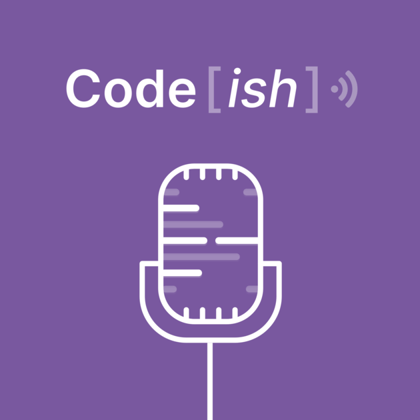Code[ish]
31. Building Docker images with Cloud Native Buildpacks
Joe Kutner, an engineer at Heroku, leads the discussion on Cloud Native Buildpacks with Stephen Levine (engineer at Pivotal), Emily Casey (engineer at Pivotal), Ben Hale (steward of the Java Buildpack), and Terence Lee (engineer at Heroku). All of them are involved in overseeing the CNB project, and have used the technology in production at their companies. At its core, CNBs are an OCI-compliant alternative to Dockerfiles, except the container is built without very much developer interaction. By analyzing source code, CNB is able to determine the base image to start from, as well as which steps to undertake in order to ensure that an application runs correctly. It's a similar logical process to the way in which Heroku's regular buildpacks operate: one Git push command is all that Heroku needs to generate a slug of your application, including fetching any dependencies or managing assets.
A Buildpack provides you with consistency by keeping your dependencies and base image up-to-date to the latest standards. It also doesn't require the average application developer to also be an expert on everything. Rather than needing to understand all of the Unix-y commands necessary to compose an application, or knowing when a particular component has a CVE, a developer's chief concern concern is to continue building their app as usual, and CNB will handle all of the other components necessary to make a deployable container.
The aim for CNBs was to make development easier for individual developers, as well as those at large enterprises. Terrance and Ben in particular know that the value of the buildpacks come from five years of production experience. Regular applications have benefitted from buildpacks, and the ecosystem around those had grown to the point where they could take what they'd learned and apply them to container images as well.
The episode concludes with a look towards the future of CNBs. As all of the APIs and tooling are open source, groups can also design CNBs for any language and framework they wish to containerize. The project recently entered beta, and, despite the positive reaction, there are still some changes that need to be made with regards to how changes to buildpacks are applied. There are processes for community members to be involved, and multiple forums for communicating with the CNB leadership team.
Links on this episode
- Buildpacks.io is where you can go to learn more about Cloud Native Buildpacks
- Discussion for proposals to CNB happens on GitHub on GitHub
- There's a Slack workspace where developers and users congregate

![Code[ish]](https://media.dev.to/cdn-cgi/image/width=60,height=,fit=scale-down,gravity=auto,format=auto/https%3A%2F%2Fdev-to-uploads.s3.amazonaws.com%2Fuploads%2Fpodcast%2Fimage%2F65%2F75dd0ad2-02ae-44e2-831d-4bb173f40fff.png) Code[ish]
Code[ish]




